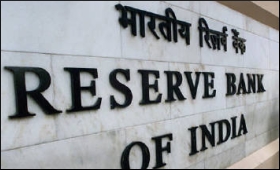RBI Deputy Governor N S Vishwanathan said that India’s banking reforms will be globally compliant, yet tailored to local needs.
He said this while delivering a special address on the concluding day of 'FIBAC 2019', India's annual banking conference organised by FICCI and IBA.
Vishwanathan discussed the way forward for banks in light of the global banking regulations. Post the global financial crisis (GFC), the Basel Committee set in motion a series of regulatory reforms intended to address the fundamental flaws that were present earlier.
The loss absorbency of capital needed to be improved, Mr Vishwanathan said. "It's not sufficient for capital to deal with normal times; there must be capital to deal with problem times in future.
Build capital when you are in good times." Banks are therefore required to build a capital conservation buffer of 2.5 per cent over and above the regulatory capital requirements.
There is a need for banks to increase their resilience. The risk weighted capital framework had to capture the risks better. The standard rating approach of Basel 2 revealed certain inconsistencies. Hence the framework had to be revised.
There were also changes to the market risk framework and the securitisation framework. Thus, emerged the concept of the 'too big to fail' banks.
"It is not just sufficient to have individually strong entities," Vishwanathan said.
For a financially strong system the Basel Committee recommended, apart from a capital conservation buffer, a large exposure framework and additional capital for systemically important banks. Such banks need to have more capital than others.
The intent is to make them self sufficient and not dependent on state support for continuance just because they are too big to fail.
The capital risk weighted asset ratio system enabled banks with low capital to build large balance sheets.
"But low density of risk weights is a function of how good the ratings are," he pointed out. It can result in shortage of capital over time. It was therefore necessary to prevent unbridled growth in the balance sheet. This came in the form of leverage.
"The leverage ratio is a binding requirement to prevent the CRAR-based capital resulting in over-leverage of the balance sheet." He revealed that there were a lot of discussions around this issue.
"One of the most important lessons of the crisis was that liquidity is an important requirement for a bank." Vishwanathan said that Indian lawmakers had already seen this as a very important requirement. They had already prescribed the statutory liquidity ratio as an important requirement for banks. Post the crisis, banks are expected to maintain a liquidity ratio of 30 days under stressed conditions.
Published On : 20-08-2019
Source : SME Times

